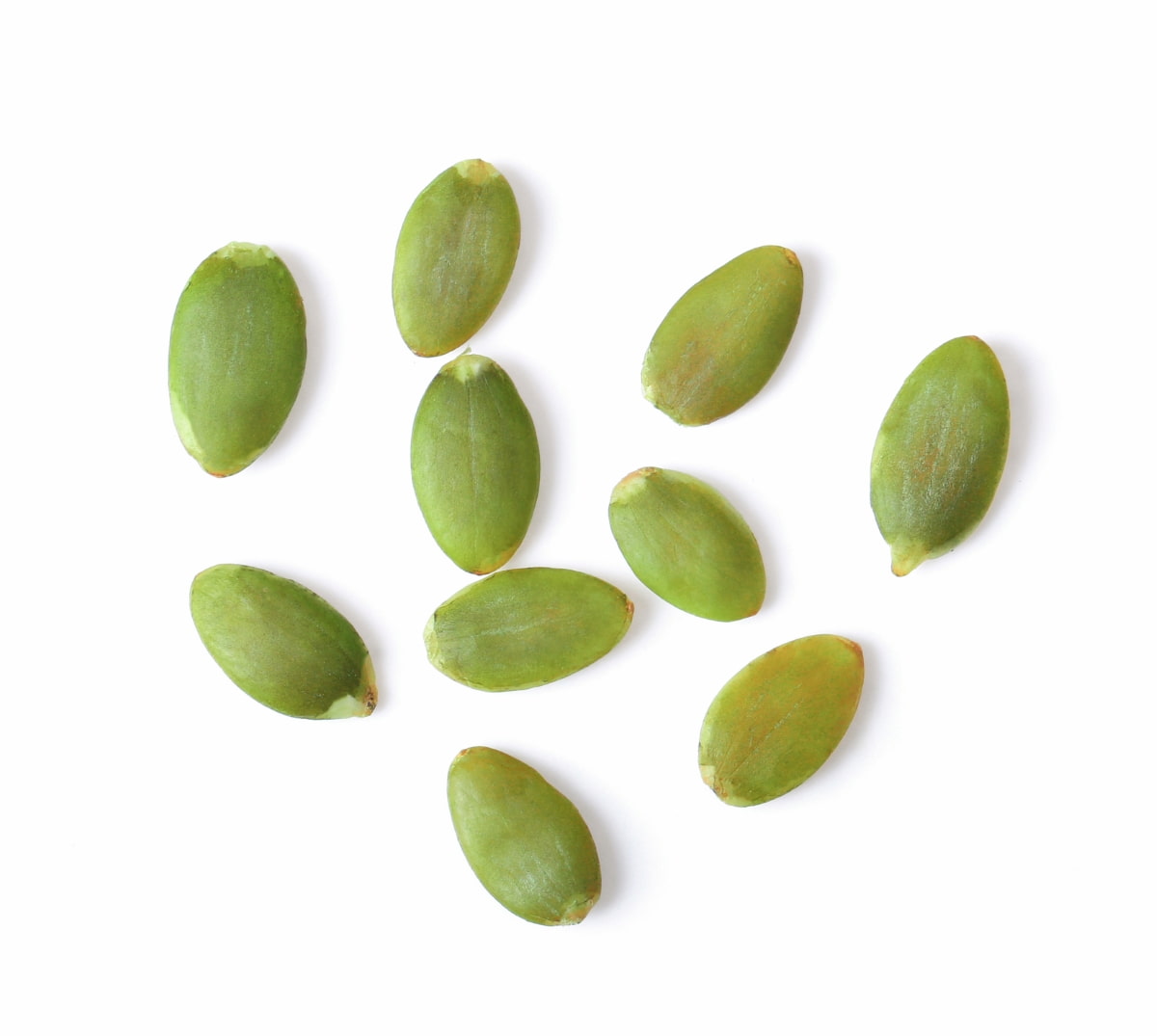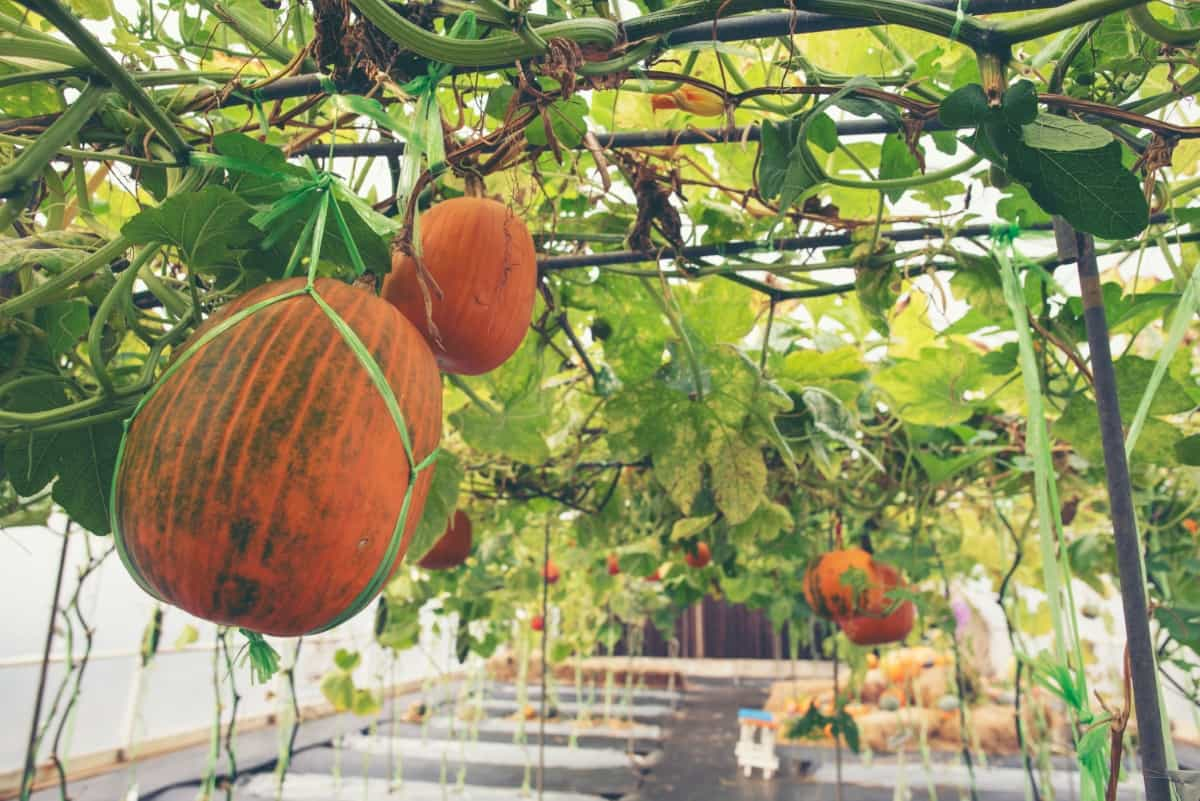If you’ve ever been to a fall fair or pumpkin festival, you might have marveled at the huge size of the Atlantic Giant pumpkin. These pumpkins’ size, weight, and sheer majesty make them a showstopper. But how much does an Atlantic pumpkin weigh? What’s the best fertilizer for giant pumpkins? And how do you even go about growing them?
This article dives deep into the art and science of growing Atlantic Giant pumpkins from seeds. You’ll discover the Atlantic Giant pumpkin’s average size and get insights on how to grow the Atlantic Giant pumpkin from seed size weight. From seed selection to pest management, we’ll walk you through every step to grow these behemoths in your garden.
How to Grow Atlantic Giant Pumpkin
Selecting the Right Seeds for Atlantic Giant Pumpkins
The journey to growing a massive Atlantic Giant pumpkin starts with selecting the right seeds. Always choose seeds from reputable suppliers, prioritizing those harvested from pumpkins with a known record of growing to impressive sizes. Ensure the seeds are fresh, as old or poorly stored seeds may have a lower germination rate. Selecting the correct seeds is like laying the foundation for a successful growing season.

Preparing the Soil for Planting Atlantic Giant Pumpkin Seeds
Before you even think of planting, the soil must be primed for these giants. Start by choosing a sunny location, as Atlantic Giant pumpkins thrive with plenty of sunlight. Till the soil is about 12 inches deep, amend it with a good amount of compost or well-rotted manure. An ideal pH level is around 6.5 to 7.5. Testing your soil’s pH can give insights into any adjustments you need. Drainage is vital; these pumpkins dislike soggy conditions, so if your garden is prone to holding water, consider building a raised bed.
Sowing Atlantic Giant Pumpkin Seeds Indoors
For a better beginning to the growing season, especially in areas with shorter summers, plant your Atlantic Giant pumpkin seeds inside your home. Use a high-quality potting mix, placing the seeds in individual pots. Plant them about an inch deep. Maintain a temperature around 70-85°F (21-29°C) for optimal germination. Within 5-10 days, you should see the first sprouts. Remember, gentle handling is crucial as the seedlings are very delicate.
Transplanting Atlantic Giant Pumpkin Seedlings
Once your seedlings have developed their second set of true leaves and the outdoor temperature consistently stays above 60°F (15°C) during the day, it’s time to transplant them outdoors. Acclimate your young plants by slowly introducing them to the outdoors over a week. This ensures they’re acclimated and won’t go into shock when transplanted. When planting, space them about 8-10 feet apart, ensuring they have ample room to sprawl and grow.
In case you missed it: 16 Best Pumpkin Patches in Illinois (IL): For Central, Southern, and Northern Regions

Providing Adequate Watering for Atlantic Giant Pumpkins
While Atlantic Giant pumpkins have a voracious appetite for water, avoiding overwatering is essential. A consistent, deep-watering routine is best. It’s recommended to provide about an inch of water weekly, adjusting based on rainfall. Watering early in the morning allows the plants to absorb moisture before the midday sun causes evaporation. Always water at the base to dry the foliage and prevent potential fungal diseases.
Fertilizing Atlantic Giant Pumpkins for Optimal Growth
To attain their colossal size, these pumpkins need plenty of nutrients. The best fertilizer for giant pumpkins is balanced and rich in nitrogen, phosphorus, and potassium. Start with a high-nitrogen fertilizer in the early growing phase to boost leafy growth. As flowers and fruits form, switch to a phosphorus-rich fertilizer to support blooming and fruit development. Follow what the manufacturer suggests, and don’t use too much fertilizer. Too much can make the plant grow many leaves but not many fruits.
Implementing Proper Pollination Techniques
For Atlantic Giant pumpkins to form, pollination is crucial. While bees are typically the primary pollinators, you can take matters into your own hands to ensure success. In the morning, choose a male flower (one without a small fruit at the bottom), remove the petals to uncover the pollen, and delicately put it in the middle of a female flower. Doing this increases the chances of successful fruit set and growth.
Managing Pests and Diseases in Atlantic Giant Pumpkins
Like all plants, Atlantic Giant pumpkins are susceptible to pests and diseases. Check your plants often for signs of bugs or diseases. Aphids, squash bugs, and cucumber beetles are usual pests. You can use natural options like neem oil or insecticidal soap to deal with bugs. Powdery mildew and bacterial wilt are common plant illnesses. To prevent these, ensure enough air flow, switch where you plant crops, and keep your garden clean.
In case you missed it: 8 Common Problems with Pumpkin Plants: Treatment and Solutions

Supporting Atlantic Giant Pumpkin Vines
As the pumpkin grows, its weight can put stress on the vines. Placing a soft barrier, like a straw or a piece of foam, under the pumpkin is a good practice to prevent any damage. This keeps it off the ground, preventing rot and ensuring the vine remains undamaged. Regularly inspect the vine to ensure it’s not digging into the pumpkin. If it is, gently reposition it.
Atlantic Giant Pumpkin Size and Weight
The Atlantic Giant pumpkin is renowned for its enormous size and weight, making it a favorite for pumpkin-growing competitions. While a typical large pumpkin might weigh anywhere from 10 to 20 pounds, the Atlantic Giant routinely reaches weights of 200 to 300 pounds, with exceptional specimens growing to over 1,000 pounds. Their vast size is a testament to their name, and some record-holding Atlantic Giants have even surpassed the 2,500-pound mark!
How Long Does It Take for Atlantic Giant Pumpkin to Grow?
From planting the seed to harvesting a fully grown pumpkin, the Atlantic Giant requires a growing season of about 130 to 150 days. Timing is crucial, especially in regions with shorter summers. Most growers start by sowing seeds indoors in early spring to ensure a head start, then transplant the seedlings outdoors once the threat of frost has passed. The pumpkins undergo a rapid growth spurt throughout the summer, often gaining dozens of pounds in just a week during their peak growth phase.
Harvesting Atlantic Giant Pumpkins
When it comes to harvesting Atlantic Giant pumpkins, patience is key. While it might be tempting to pick your pumpkin early, it’s essential to wait until the vine starts to wither or the pumpkin’s skin hardens, ensuring it has reached its maximum size. Harvesting occurs in late September or early October, right before the initial severe frost.
In case you missed it: How to Grow Pumpkin from Seed in Greenhouse: A Step-By-Step Guide for Seed to Harvest

When cutting the pumpkin from the vine, always leave a few inches of the stem attached. This gives the pumpkin a more aesthetically pleasing appearance and helps prolong its storage life. Once harvested, these pumpkins can be displayed with pride or entered into local pumpkin competitions.
Conclusion
Growing Atlantic Giant pumpkins can be a rewarding experience. You can marvel at your colossal pumpkin come harvest time with the right techniques, patience, and care. Whether aiming for a record-breaking weight or simply wanting the satisfaction of growing something truly remarkable, the Atlantic Giant pumpkin is a garden challenge worth undertaking.
- Feed Your Flock for Less: Top 10 Tips to Save on Chicken Feed
- Ultimate Guide to Ossabaw Island Hog: Breeding, Raising, Diet, and Care
- Hatching Answers: The Top 10 Reasons Your Chickens Aren’t Laying Eggs
- Eggs and Economics: Breaking Down the Cost of Raising Backyard Chickens
- Defend Your Greens: Proven Methods to Keep Iguanas Out of Your Garden
- Ultimate Guide to Cinnamon Queen Chicken: A Comprehensive Guide for Beginners
- Ultimate Guide to California Tan Chicken: Breeding, Raising, Diet, Egg-Production and Care
- Ultimate Guide to Marsh Daisy Chicken: Breeding, Raising, Diet, and Care
- 10 Types of Chicken Farming Businesses You Can Start for Profits